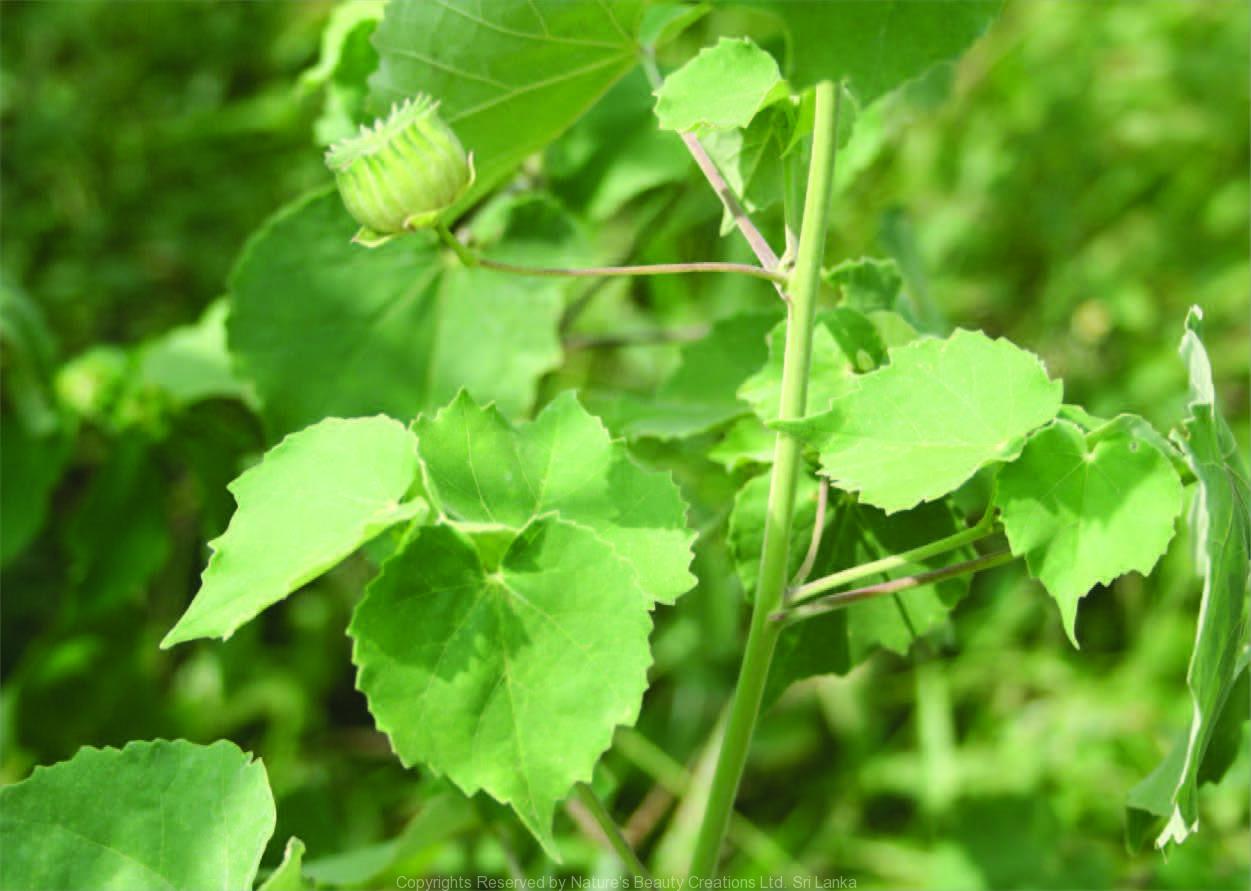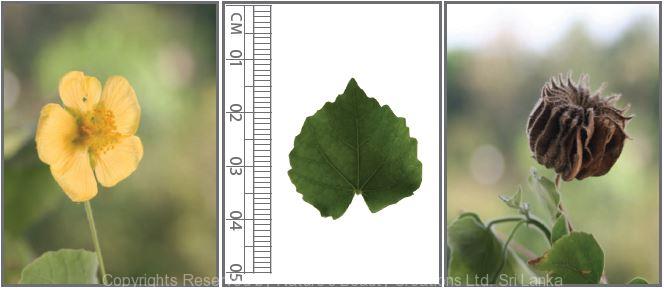

Traditional Knowledge
Useful plant parts :
Leaf and root
Uses in traditional medicine :
- Infusion of the root is taken to increase the activity of urinary system
- Green porridge prepared with young leaves is taken for haemorrhoids
- Leaves are used to treat bronchitis, bilious diarrhoea, gonorrhoea, fever, toothaches and tender gums
- Used as a mouthwash, enema and as a disinfecting agent for cleaning wounds and vaginal infections
Scientific Research
Chemical constituents:
Phenolic acids: vanillic, p-coumaric, gallic, p-hydroxybenzoic and caffeic acids, sesquiterpene lactones: alantolactone and isoalantolactone, flavonoids: abutilin A, luteolin, chrysoeriol and benzamide derivative from flowers
Bioactivity :
Methanol and aqueous extracts of whole plant: anti-inflammatory, analgaesic; aqueous extract of leaves: hepatoprotective; methanol extract of aerial parts: increases libido of females; alcohol and aqueous extracts of leaves: hypoglycaemic, immunostimulative; ethylacetate extract of plant: antioxidative
Clinical:
References : Bagi, M. K. and Kalyani, G. A., (1985), Preliminary screening of Abutilon indicum: II analgesic activity, fitoterapia, 56(3), 169-171 Dashputre, N. L. et. al., (2010), Immunomodulatory Activity of Abutilon Indicum linn on Albino Mice, International Journal of Pharma Sciences and Research, 1(3), 178-184. Gaind, K. N. and Chopra, K. S., (1976), Phytochemical investigation of Abutilon indicum, Planta Med, 30(2), 174-88. Khadabadi, S. S. and Bhajipale, N. S., (2011), Effect of Abutilon indicum extract on Female Libido in Rats, International Journal of PharmTech Research, 3(3), 1652-1659. Kuo, P. C. et al., (2008), Chemical constituents from Abutilon indicum, Journal of Asian Natural Products Research, 10(7), 689-693. Liu, N. et al., (2009), Chemical constituents of Abutilon indicum (L.) Sweet, Journal of Shenyang Pharmaceutical University, 1, 21-30. Matławska, I. and Sikorska, M., (2002), Flavonoid compounds in the flowers of Abutilon indicum (L.) Sweet (Malvaceae), Acta Pol Pharm, 59(3), 227-9. Paranjape, A. N. and Mehta, A. A., (2008), Investigation into the Mechanism of Action of Abutilon indicum in the Treatment of Bronchial Asthma, Global Journal of Pharmacology, 2(2), 23-30. Porchezhian, E. and Ansari, S. H., (2005), Hepatoprotective activity of Abutilon indicum on experimental liver damage in rats, International Journal of Phytotherapy & Phytopharmacology, 1, 1. Rahuman, A. A. et al., (2008), Isolation and identification of mosquito larvicidal compound from Abutilon indicum (Linn.) Sweet, Parasitology Research, 102(5), 981-988. Saraswathi, R. et al., (2011), Phytochemical investigation, analgesic and anti inflammatory activity of Abutilon indicum linn, International Journal of Pharmacy and Pharmaceutical Sciences, 3(2), 154-156. Seetharam, Y. N. et al., (2002), Hypoglycemic activity of Abutilon indicum leaf extracts in rats, Fitoterapia, 73, 156-159. Sharma, P. V. and Ahmad, Z. A., (1989), Two sesquiterpene lactones from Abutilon indicum, Phytochemistry, 28(12), 3525. Srividya, A. R. et al., (2012), Relationship between Antioxidant Properties and Chemical Composition of Abutilon Indicum Linn, Indian J Pharm Sci, 74(2), 163-7.
Copyrights Reserved By
Natures Beauty Creations




